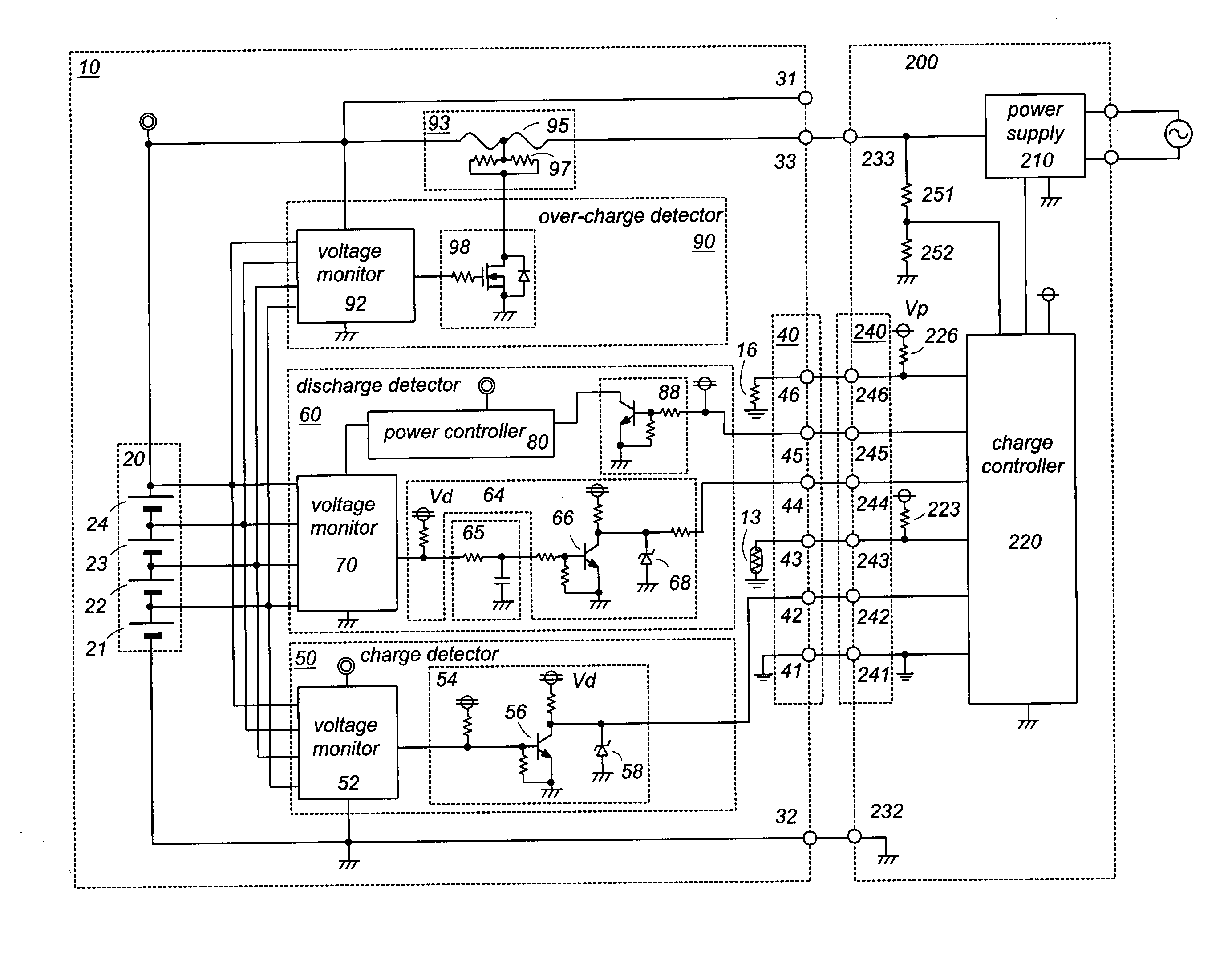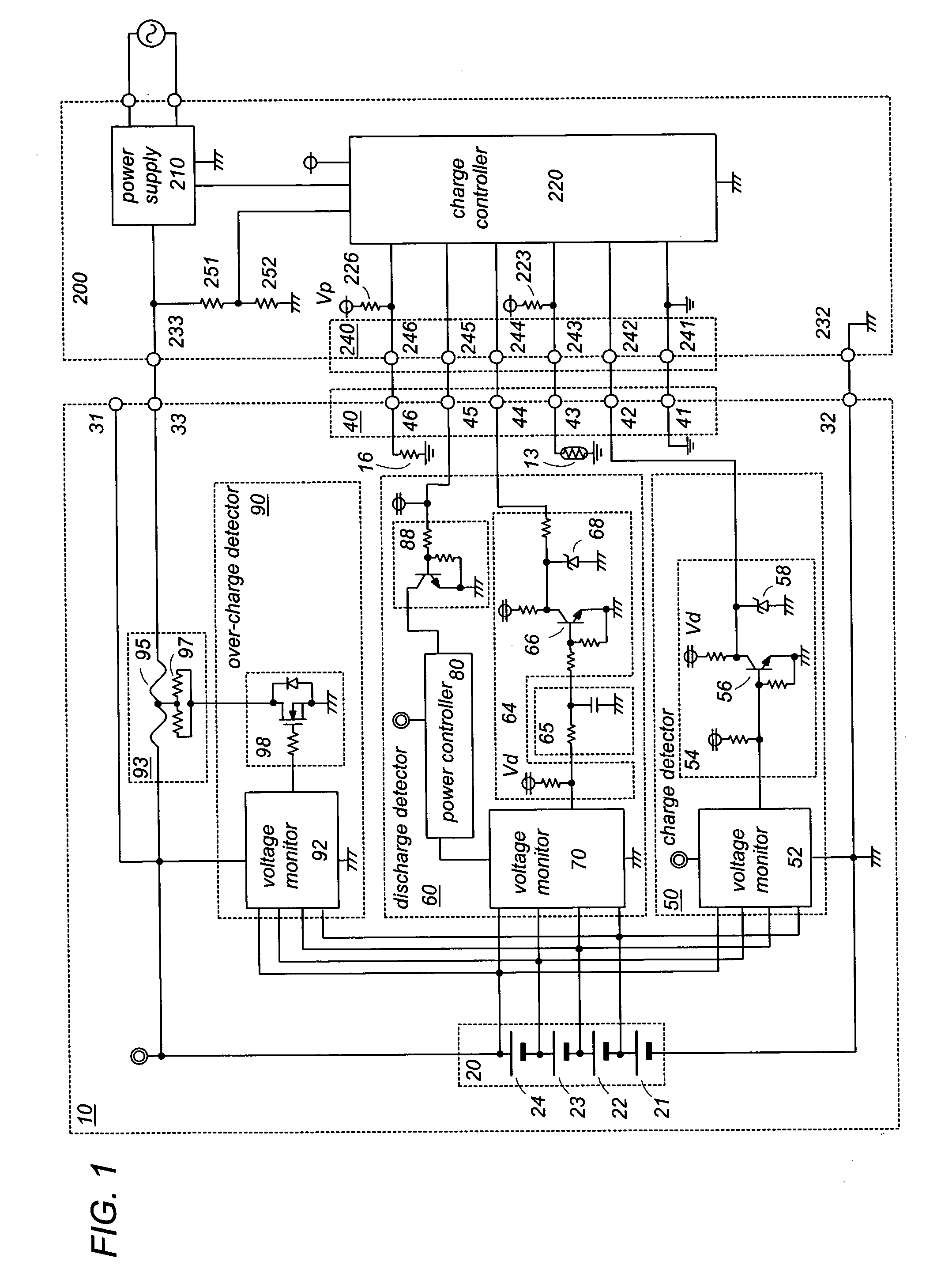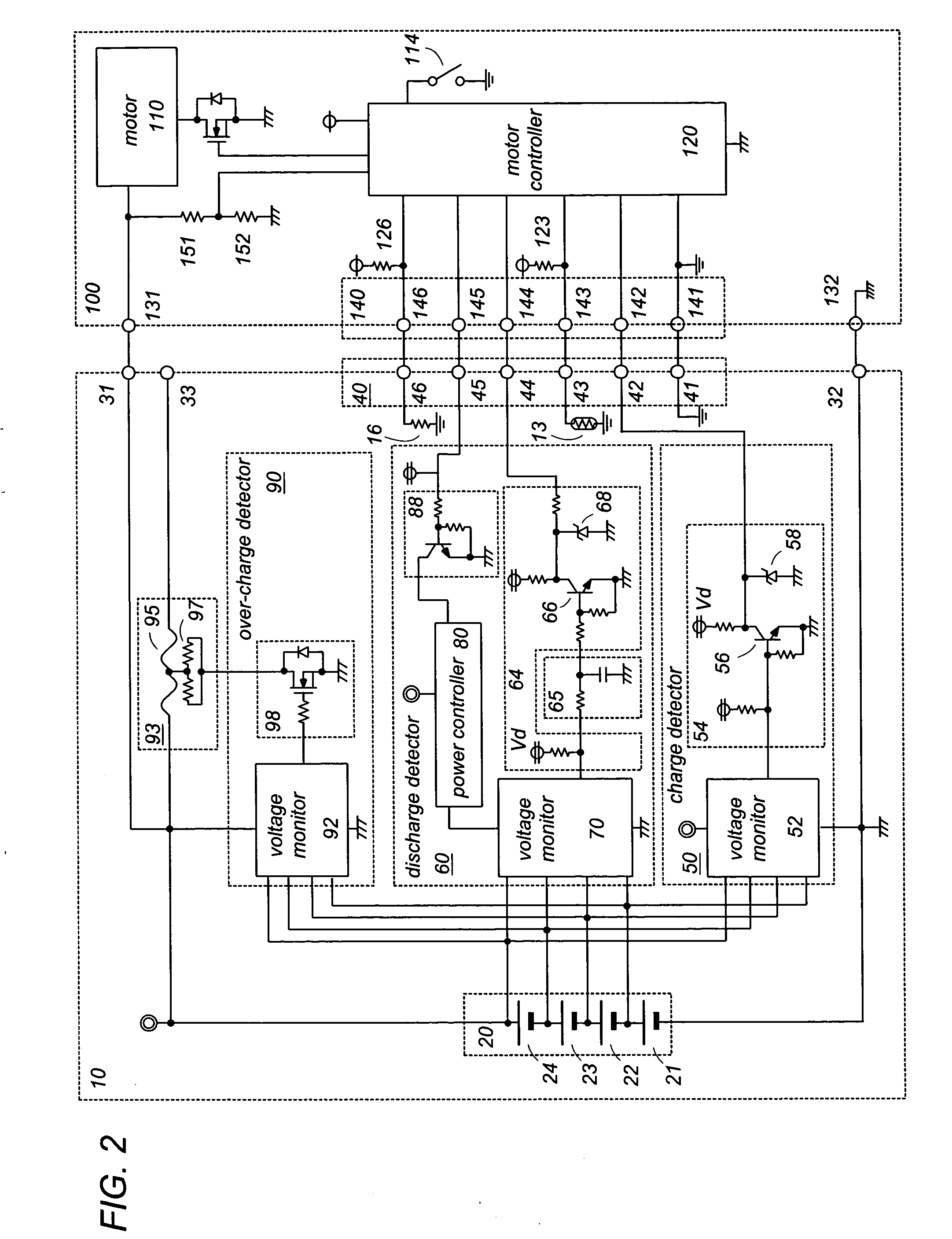[0004] In view of the above problem, the present invention has been accomplished to provide a
rechargeable battery pack for a power tool which is capable of avoiding an over-discharging when connected to operate the power tool, yet being protected from being exhausted while it is left disconnected from a charger. The battery pack in accordance with the present invention includes a battery stack composed of a plurality of series connected secondary cells, a pair of
power output terminals connected across the battery stack to supply a voltage of the battery stack for operating the power tool, and a
signal connector configured to include a
charge control terminal, a discharge control terminal, and a
signal ground terminal connected to a circuit ground. The battery pack includes a charge detector which is configured to monitor a
cell voltage appearing across each of the secondary cells and to provide a high charge-
control signal when all of the cell voltages are lower than a first threshold (VTH1) and a low charge-
control signal when anyone of the
cell voltage becomes higher than the first threshold (VTH1). The high charge-
control signal and the low charge-control
signal are fed through the
charge control terminal to a
battery charger for regulating a
charge current of charging the secondary cells. The battery pack also includes a discharge detector which is configured to monitor the cell voltage across each of the secondary cells and to provide a discharge stop signal when any one of the cell voltages becomes lower than a second threshold (VTH2) which is lower than said first threshold (VTH1). The discharge stop signal is fed through the discharge control terminal to the power tool for deenergizing the power tool. The discharge controller comprises a voltage monitor and a
power controller. The voltage monitor is configured to include a plurality of comparators and a plurality of
constant voltage elements each providing a constant voltage that defines the second threshold (VTH2). Each of the comparators is configured to compare each of the cell voltages with the second threshold to give a comparison result. The voltage monitor is configured to be energized by the battery stack and to provide the discharge stop signal to the
charge control signal based upon the comparison results. The power controller is configured to energize the voltage monitor upon the battery pack being connected to the power tool. Accordingly, the discharge detector is protected from consuming the energy of the battery pack while being disconnected from the power tool, thereby assuring to give a long battery life while retaining an
advantage of protecting the battery pack from being over-discharged during the use of the power tool.
[0005] Preferably, the power controller is configured to have a plurality of different current supply paths which supply a current from a common potential of the battery stack respectively to different potentials of the battery stack through each one of the constant voltage sources. Each of the current supply paths includes a switch which is configured to close only in response to a detection signal issued when the battery pack is connected to the power tool. Accordingly, no leak current flows across each of the secondary cells while the battery pack is left disconnected from the power tool, whereby it is possible to keep the voltage monitor disconnected entirely from the battery stack, assuring to consume no substantial power of the battery pack when the battery pack is left disconnected from the power tool.
 Login to View More
Login to View More  Login to View More
Login to View More 


